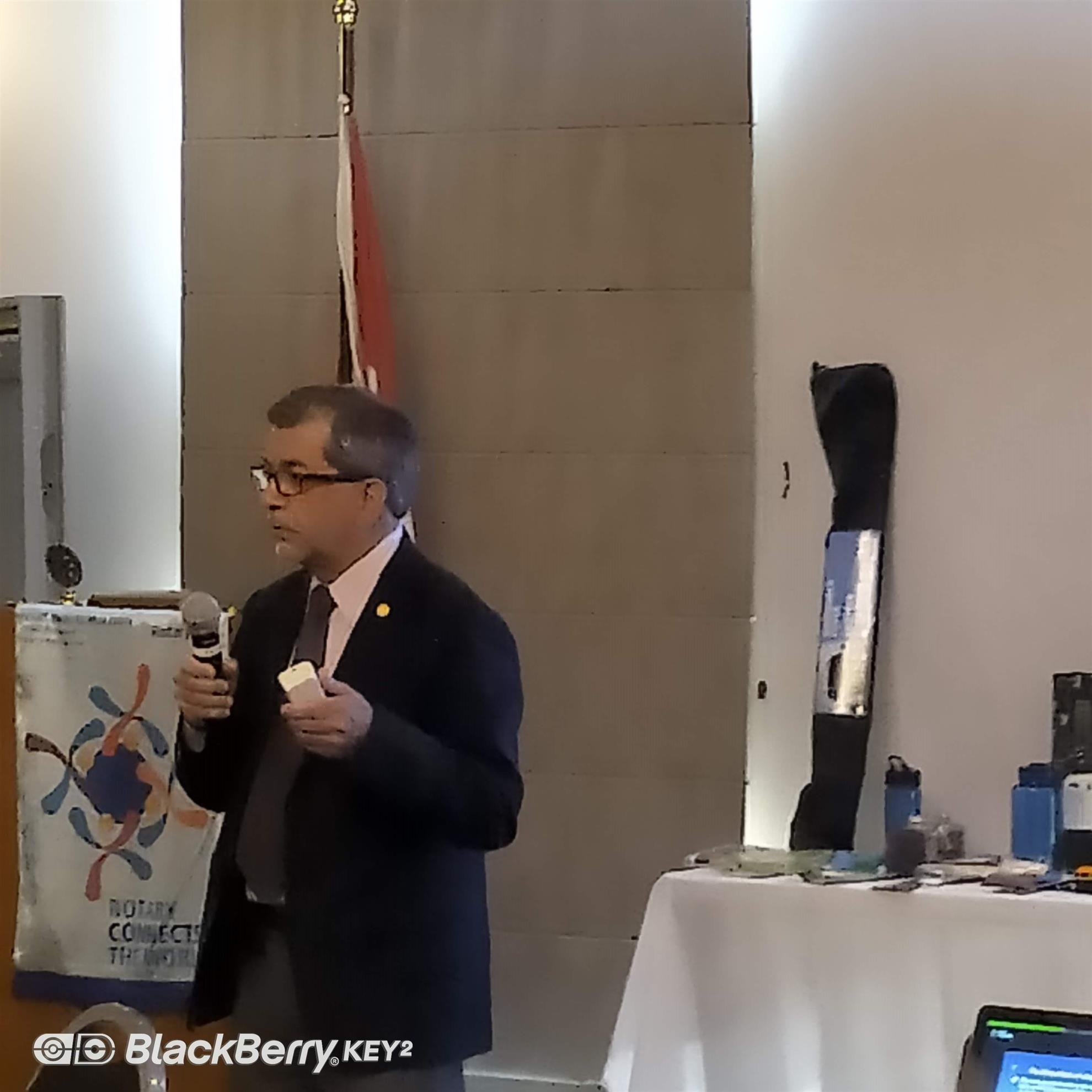This past week we were honoured to hear from Dr. Jack H. Jhamandas, (MD and PhD) Distinguished University Professor, from the Department of Medicine, Division of Neurology. Dr. Jhamandas, a clinician and scientist at the University of Alberta, Edmonton, spoke to us about his search for a novel therapy against Alzheimer’s disease. He opened with a story about how random luck can play a life changing part in our lives, with a clip from Indiana Jones and the Last Crusade, where Indiana Jones chooses a non-descript cup to drink from, in place of a gold one, and lives as a result. Those who had chosen the golden cup died.
Dr. Jhamandas told us that Alzheimer’s disease is the most common form of dementia, comprising about eighty to ninety percent of cases. It causes a global loss of intellectual function. It affects about one in nine people at age sixty-five, increasing to about one in three at age eighty-five. About half a million Canadians are presently living with various stages of Alzheimer’s disease. It has been calculated that about one in six Albertans are affected either directly or indirectly by this disease. He said that this disease is not an obvious out-front type of disease that attracts public health attention. It plays out silently in our homes and lives on a daily basis. He then showed us a series of self-portraits made by an artist who made yearly drawings of his face, showing the slow dissolution of self that was very obvious in the changes from year to year, as the face became more and more distorted, until it was almost unrecognizable as a face. He said that, to date, there have been four hundred and thirteen clinical trials testing two hundred and forty four different compounds as treatments for this disease, and none proven to be effective or practical enough
 Some of the practical considerations for easy administration (by mouth) and effectively crossing the blood brain barrier, a very difficult task for any foreign compound, make it truly difficult to find something that might work. We also need an animal model that is very similar to the human disease and fortunately we now have this in several strains of mice with genetic and symptomatic similarities. People with Alzheimer’s show a slow accumulation of a protein called amylin in their brains that disrupts the normal functioning, and this is also seen in the animal models.
Some of the practical considerations for easy administration (by mouth) and effectively crossing the blood brain barrier, a very difficult task for any foreign compound, make it truly difficult to find something that might work. We also need an animal model that is very similar to the human disease and fortunately we now have this in several strains of mice with genetic and symptomatic similarities. People with Alzheimer’s show a slow accumulation of a protein called amylin in their brains that disrupts the normal functioning, and this is also seen in the animal models. Some years ago, it was noticed that some drugs used to treat diabetes also seemed to improve symptoms of Alzheimer’s. Dr. Jhamandas and his colleagues have been testing some of these compounds in cell culture, isolated organ studies and in the animal model, for many years.
They study the mice by using a navigation test where they introduce the mice, on a daily basis, to a large shallow pool of water with a platform in a fixed location. The normal mice quickly learn, after a few days of practice, to swim directly to the platform. The affected mice swim around and around in an erratic pattern, day after day. Affected mice treated with an effective compound learn to swim to the platform in much less time than the untreated mice. They study the cell culture and organ model (a part of the brain known as the hippocampus taken from the affected mice) using electrical stimulation before and after treatment with the compounds. He showed us overlaid response traces of each, and they are much more normal in the treated tissues.
One of the effective compounds they have been using is AC253, a small protein known as a peptide. It must be administered directly into the spinal fluid as the digestive system would destroy it and the blood brain barrier would block it from entry, if injected into the bloodstream. To overcome these problems, Dr. Jhamandas and his colleagues have studied the molecule and determined the chemical shape and properties of the critical portion of the molecule. Combine this with a chemical structure that will withstand digestion and also cross the blood brain barrier. They then used computer modelling to study the ‘fit’ of thousands of prospective compounds, synthesized a few of the best prospects and are now testing them in the models.
Dr. Jhamandas said that all of this is very expensive and there is always a shortage of funding. The regulatory framework that the University has in place also makes it cumbersome, and time consuming to get even simple sounding things like external testing done. These promising compounds are still years from the first stage of clinical trials, but they are hopeful that this path will lead to success. As Dr. Jhamandas so compassionately said, we need to keep hope, that there will be a better today and tomorrow for people who have Alzheimer’s disease.